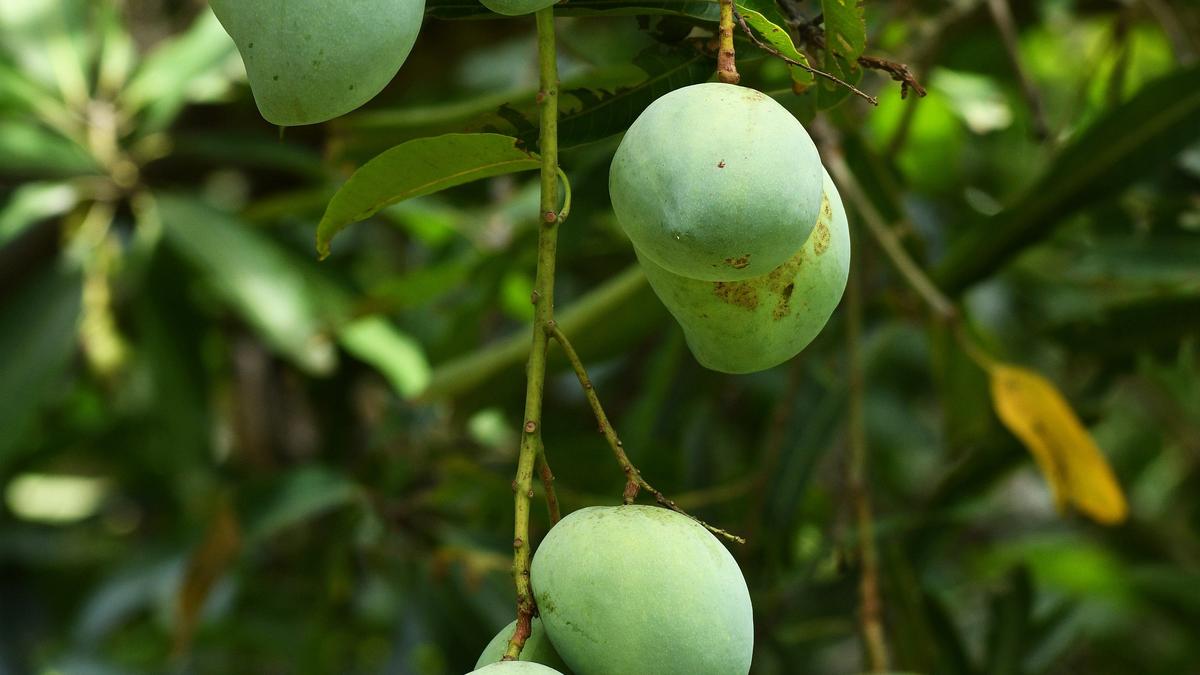
Mangoes in Tamil Nadu hit by excessive heat, but farmers hopeful
The Hindu
Mango farmers in Tamil Nadu face poor yields due to excess rains and heat, impacting prices and harvests.
When he noticed tamarind trees in his village bear plenty of fruit in January this year, P Rajkumar knew his mango yield would be poor. “This is the thumb rule my ancestors followed,” says the mango farmer based in Vanavasi in Salem district: that if tamarind trees are full of fruit, mango trees will be the opposite, and vice-versa. Mangoes, this season, are not having a great run, and there is a general sense of disappointment among farmers.
“In our district by the Western Ghats, mango farmers have seen only 10% of their usual yield,” says KS Jaganatha Raja, a farmer in Rajapalayam who sells mango saplings at his nursery. “This is because of excess rains and now, excess heat. Due to excess rains, instead of flowers, all we got were new leaves,” he explains, adding that some trees did flower, but they too dried up due to the heat.
Jaganatha owns a mango orchard spread across 12 acres near the foothills of the Western Ghats, where he grows and propagates several rare varieties. “Fruits have not matured enough, but farmers, fearing winds, tend to get them harvested and sent to the market, despite not getting good prices,” he adds. This results in traders resorting to using chemicals such as carbide and ethylene to get fruits to ripen quickly.
In his younger years, Rajkumar says his parents would place fruits inside straw, cover them with a jute sack and leave them alone for a few days. “When they ripened, the household would be filled with the heady fragrance of mangoes,” recalls the 60-year-old who has around 550 mango trees, and grows imam pasand, Salem Bengalura, totapuri, neelam, senthooram, and nadusalai mangoes. He is among the few farmers in the State who are managing to get a reasonable yield thanks to planning ahead. “Last year, we had good rains, and we are getting by, by taking care of our trees and watering them sufficiently,” he adds.
Rajkumar explains: “For mango trees to thrive, the difference between day and night temperatures should not be more than 13 degree Celsius, but now, this exceeds 16 degree C.”
In Salem, according to farmer Sathish Ramasamy, the quality of fruits is excellent, with many of them ripening fast. He sells what he harvests at his Sangagiri farm online, and has customers across India. Sathish recommends varieties such as Salem Bengalura, nadusalai, panjavarnam, and the tiny but irresistibly sweet sakkarakutty.
Sathish also grows Miyazaki, said to be the most expensive mango in the world. A kilogram can cost around ₹15,000, and this year, he hopes to harvest the variety. “Some of my customers are fond of this variety. But if you ask me, it tastes just like senthooram mangoes,” he adds. Overall, mango prices have gone up by 30 to 40%. “Last year, we sold a kilogram of imam pasand for ₹200; whereas now, it costs around ₹300,” he says.











